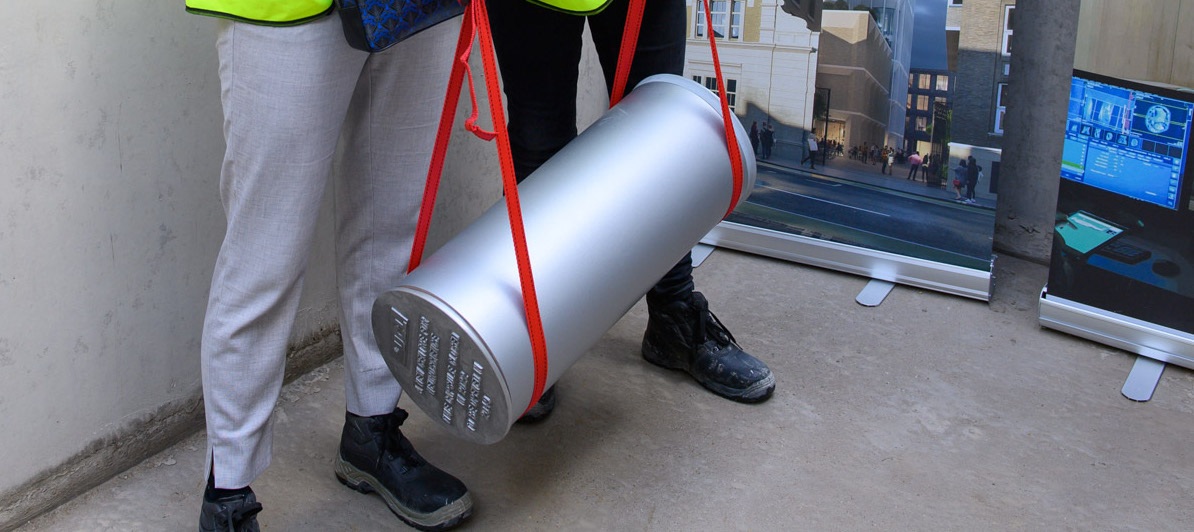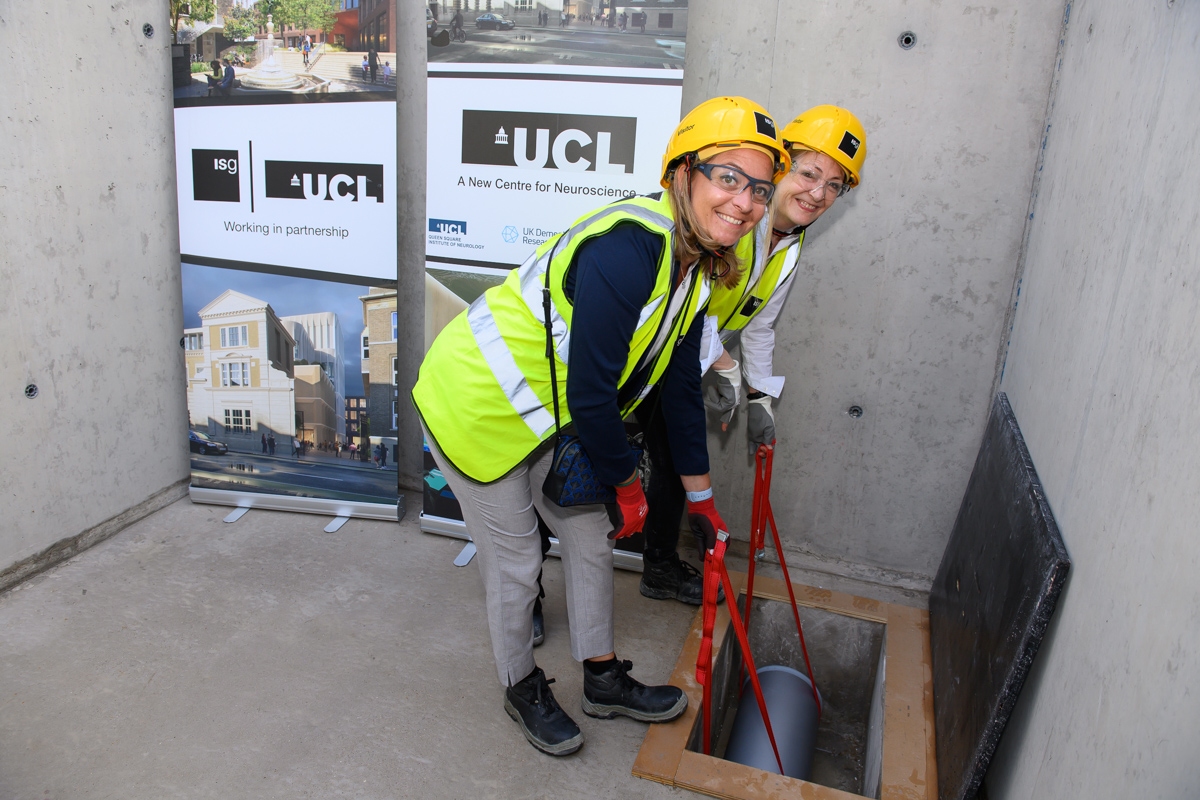An Iceland plastic carrier bag, a Covid-19 vaccine vial and a piece of stainless steel have been buried in a time capsule of a new world-class centre for neuroscience at UCL, and the future home of the UK DRI hub, currently in construction on Grays Inn Road, London. The capsule was placed in the building’s foundations today (Thursday 19 May) as part of Dementia Action Week.
UCL is already one of the world's largest, most productive and highest-impact neuroscience centres and the pioneering new building, due to open in 2024, will accelerate the discovery of treatments for neurological conditions, including dementia, of which there is still no known cure.
Expanding the existing facilities at Queen Square Institute of Neurology will create a dual hub for neurological science and house the UK DRI at UCL and HQ team; a large proportion of UCL Queen Square Institute of Neurology; and an outpatient facility for the UCLH National Hospital for Neurology and Neurosurgery, allowing clinicians and researchers to work closer than ever before with people with neurological disorders, their doctors and researchers.
The time capsule, due to be opened in 2049 – the building’s silver jubilee - includes a range of objects that tell the story of the centre’s foundation and preserve its memories for years to come, from its inception, obtaining the Eastman Dental Hospital site in 2017, approval of the planning application in 2019 and breaking ground in 2021 – navigating the Covid-19 pandemic along the way.



